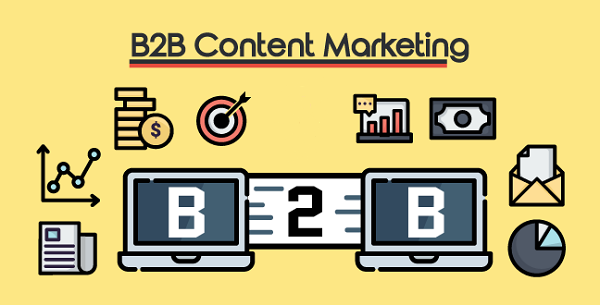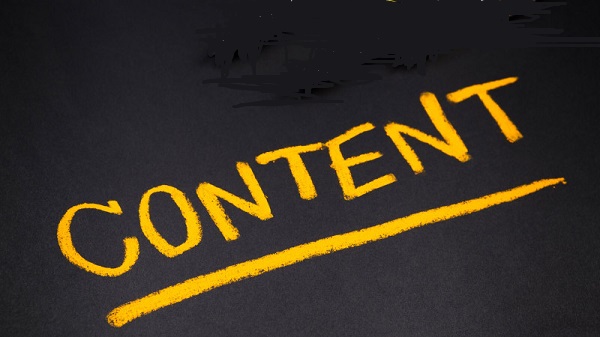Five Steps to Benefit from the B2B Content Marketing Strategy
B2B stands as a very short and easy shorthand for something that is not nearly as simple as it seems – business to business strategy. Primarily this strategy targets companies and bulk buyers, while the other well-known one, B2C is directed to individual customers. Therefore, how buyers make their decisions also affect the strategies that we will be focusing on. In the case of B2C, the decisions are mostly based on the price, product popularity, and customers’ choice, whereas in planning a B2B strategy price and profit potential play a key role. Over time the popularity of B2B has drastically risen, and due to that the marketing approach also had to undertake some changes. If your company is B2B oriented one of the most important changes that you should pay attention to is how to create a content marketing strategy. Doing that isn’t an easy task, and it requires a strategic approach that we’ll try to decompose into five main steps.
1. Identify and Understand your Audience
The first step when starting any marketing strategy is to identify who is your audience. When it comes to developing a B2B content marketing strategy the core idea is to put yourself into your customer’s shoes. Of course, this is important in every marketing strategy, but in B2B it is even harder because your main audience are companies and not individual customers. Ideas that can seem very clear and logical to you might not be perceived as such by your audience. There are a few things that could come handy in order to avoid as many mistakes as possible. One of the best things that you can start with is creating a customer’s avatar. This means that you need to describe your customer – gender, age, location, job, activities, etc. That way you are classifying your targeted audience and you’ll be able to provide a more precise marketing strategy. In order to see if your predictions were right, you can use help from tools such as Google Analytics or Google Keyword Tool. By using Google Keyword Tool you’ll be able to identify what are the terms that your potential customers are most frequently searching for. On the other hand, Google Analytics will provide you valuable information in terms of who visited your web site, where do they come from, how much time do they spend on your site (and on which pages), etc.
2. Set Content Marketing Goals
After you managed to get a better understanding of your targeted audience the next important step is to define a relevant set of content marketing goals. Why do you think that content is important for your company? What kind of content do you want to create? What are you aiming with more content – create brand awareness, improve loyalty, or to share your projects and ideas? These are just some of the important questions that you have to ask yourself when preparing a B2B content marketing strategy. Usually, when planning a content marketing strategy B2B companies are mainly focused on building/retaining an audience, gain profit, lower the costs, etc. If you are one of those people who still can not clearly see the potential of content marketing, let us put it into numbers:
- According to one research conducted by HubSpot, a company that regularly uploads blog content generates 55% more website visitors, 97% higher inbound links, and 434% higher indexed pages.
- Content factory mentioned that one of the top 3 reasons for people to follow a company on social media is their content
Once you are done with these first two steps, it is time to start making some content.
3. Provide Relevant Content
There is no point in writing content just for the sake of writing it. When you have already defined your target audience and goals, the next logical step is to provide some content which the audience will find relevant. In order to do so, you have to find some middle ground with your audience. There are a few things that you can do complete this goal:
- Be informative – always strive to offer your audience some relevant information, but do no over exaggerate. It is important to remain as creative and interesting as possible.
- The content needs to be appealing: put yourself in the reader’s position. Would you have the patience to read some way too long post without pictures, video clips, headlines, etc? Probably no. Then do not produce that kind of content either.
- Share your stories, news, and tips to connect more with the customers
- Include special offers and discounts that would incentive the audience to investigate more about you and to maybe decide to try your product/service
- Always try to implement a “call to action” at the end of your posts so that your reader can potentially be converted into a customer
4. Consistency in Content Distribution
Besides producing relevant, quality content you need to publish it regularly. When you start producing your blog content you can perceive it as an easy task, but eventually, you’ll see that the number of possible topics to write about will narrow. Then it becomes very easy to start delaying with publishing and lose consistency. Of course, every company can have a different approach to its distribution strategy based on their aims and needs. There are different types of content distribution that you can use:
- Native Advertising – most suitable for B2B companies. This kind of content is published on the companies website and it is meant for a specific, targeted audience. However, it requires patience since the results are visible only after some period – half or a whole year.
- Paid Social – Social networks are very valuable tools when it comes to approaching your targeted audience.
- Organic Distribution – Content that can be promoted without paying for it on social media, email, etc.
How would you know what strategy works the best in your case if you don’t measure and analyze the results? By analyzing the results of your B2B content marketing strategy you’ll see what aspects of it worked well and what needs to be improved. Thanks to some measuring tools that we have mentioned, companies can get an insight into how your content is performing. This has also been supported by many conducted types of research. In this one, conducted by Statista, it is obvious that the B2B companies have realized the importance of content marketing strategy and therefore have significantly increased the budget during 2019.
Conclusion
When it comes to content marketing strategy, there is no only one right approach that fits all the B2B companies. As we explained, you have to analyze everything before making the final decision. Doing this kind of investigation can also help you with getting a better understanding of your competitors’ work, and compare your strategy to theirs. You have to find a strategy that works the best for your company, and in order to do that, experimenting and patience would be needed.





